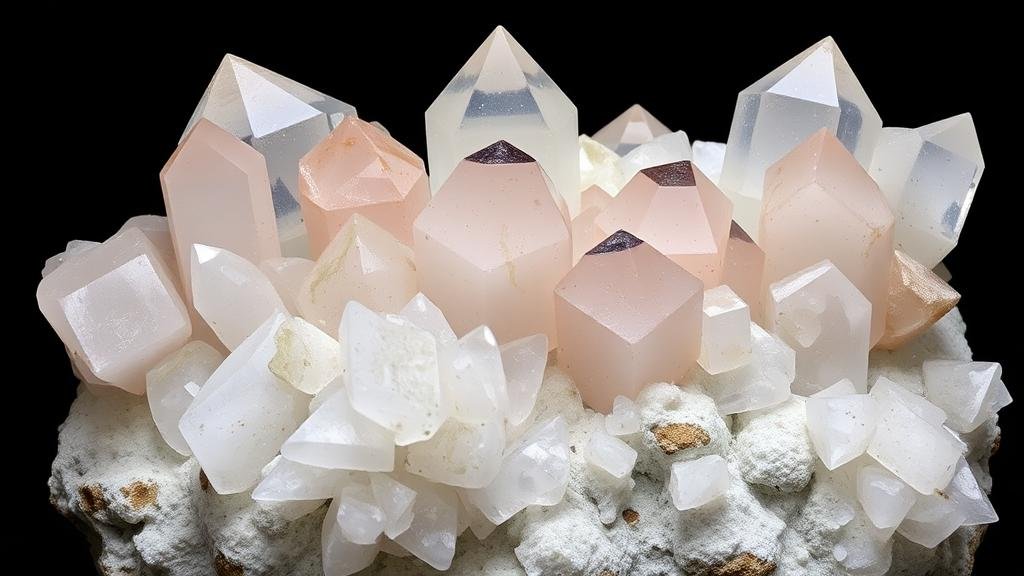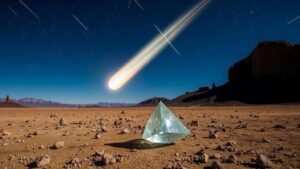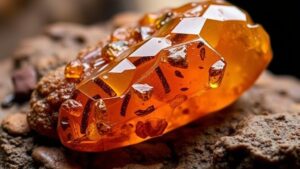The Perfect Quartz Cluster: Adventures in Crystalline Discoveries
The Perfect Quartz Cluster: Adventures in Crystalline Discoveries for Rockhounds and Mineral Collectors
Quartz, one of the most abundant minerals on Earth, is often the centerpiece of any well-curated mineral collection. Among its various forms, quartz clusters are revered for their stunning natural beauty, intricate formations, and potential metaphysical benefits. For rockhounds and mineral collectors alike, understanding the nuances of quartz clusters can make the difference between an ordinary find and a perfect specimen. This article delves into the characteristics, formation, and collecting tips for quartz clusters, while also highlighting potential adventures in crystalline discoveries.
The Allure of Quartz Clusters
Quartz clusters are composed of several individual quartz crystals that have grown together in a single formation. Their beauty lies in their unique formations, size, and clarity. The most coveted quartz clusters display the following characteristics:
- Clarity: High clarity is crucial for aesthetic appeal. Transparent and near-colorless specimens are typically more valued.
- Size: Larger clusters tend to be more striking and can range from a few inches to several feet in length.
- Shape: Aesthetic growth habits, such as terminated points and intricate intergrowths, enhance the allure.
According to the Mineralogical Society of America, quartz crystallizes in the trigonal system, which contributes to its diverse geometric shapes. The most common types of quartz include crystalline quartz, amethyst, and citrine–all of which form stunning clusters.
Formation of Quartz Clusters
The genesis of quartz clusters occurs over millions of years through a process called crystallization. There are two primary mechanisms by which quartz forms:
- Igneous Processes: Quartz can crystallize from molten rock (magma) as it cools, resulting in large veins or pockets of quartz in igneous intrusions.
- Hydrothermal Processes: Hydrothermal fluids rich in silica can deposit quartz crystals in fractures and voids within rocks, leading to the formation of clusters.
The average rate of growth for quartz crystals is approximately 0.001 mm to 0.1 mm per year, influenced by temperature and the concentration of silica in the surrounding environment.
Finding Your Perfect Quartz Cluster
For rockhounds eager to discover stunning quartz clusters, several locations are renowned for their quartz deposits:
- Arkansas, USA: Home to some of the largest and clearest quartz crystals in the world.
- Brazil: Known for its massive quartz clusters, particularly amethyst and citrine.
- Himalayas: The regions surrounding the Indian subcontinent yield unique semi-transparent quartz formations.
Local rock and mineral shows are also excellent venues for sourcing quartz clusters. When shopping for specimens, collectors should be vigilant for authenticity and clarity. Using a 10x magnifying loupe can help assess the quartz for inclusions and flaws.
Practical Tips for Collecting Quartz Clusters
For both novice and experienced collectors, understanding best practices can enhance the overall collecting experience:
- Know Your Preferences: Identify specific quartz varieties–such as smoky quartz, rose quartz, or clear quartz–that appeal to you.
- Join a Community: Engage with local rockhounding clubs or online forums for shared adventures and tips on mineral hunting.
- Document Your Finds: Track your collection with details about location, date, and any peculiar features of each specimen.
Also, be sure to adhere to ethical collecting practices. Always seek permission when collecting in private lands and avoid depleting local sites, which can threaten ecosystems.
The Therapeutic and Metaphysical Uses of Quartz
Beyond aesthetics, quartz is often attributed with various metaphysical properties, making it a popular choice for crystal healing practices. Practitioners believe that quartz enhances psychic abilities and facilitates communication with spiritual realms. It is also said to promote emotional stability and relieve stress. While scientific evidence supporting these claims is limited, the subjective benefits appreciated by users foster an enduring interest in quartz.
Quartz has a unique piezoelectric property, meaning it can generate an electric charge under mechanical stress, a principle used in watches and electronic devices. This property amplifies the allure of quartz, connecting the natural world with technology.
Conclusion: The Adventure Continues
To wrap up, the pursuit of the perfect quartz cluster is more than just a collection; its a journey filled with discoveries, connections, and appreciation for geology and natural beauty. Whether youre a dedicated rockhound or a casual collector, understanding the characteristics and formation of quartz clusters enhances your appreciation and can help you curate a breathtaking collection. As you embark on your adventures, remember to connect with local communities, document your finds, and, most importantly, enjoy the tranquility and beauty that crystals offer.
Take the next step: plan a trip to a renowned crystal location, join a collecting group, or start sharing your collection online to connect with like-minded individuals. world of crystalline discoveries awaits!



